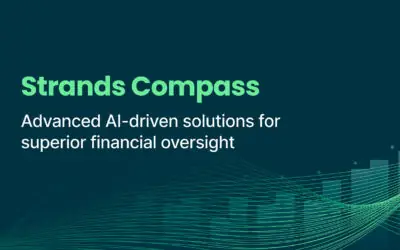Banks historically focused their attention on larger companies as the risk associated with SMEs was often deemed too great and simply not profitable enough. However, this has all changed in recent years, primarily because of advances in financial technology, regulatory changes, and stiffer competition in financial services. According to a recent Eurostat publication on small and medium-sized enterprises, SMEs contribute about 56% of the entire European Union economy and represent 99% of all enterprises. Therefore, the commercial opportunity for banks is enormous, but it requires proactive solutions that target their specific financial challenges.
Let’s take a look at the three primary financial challenges faced by SMEs in 2022 and how banks can solve them.
1. The shift to a cashless society
The pandemic rapidly accelerated what was already a quick transition to a cashless society. Card transactions quickly became the preferred and even only payment option for merchants and customers, as it removed the possibility of bacterial transmission via cash notes. However, this shift has created possible financial challenges for SMEs.
Chiefly, their cash flow is becoming increasingly dependent on card payments. This means that they only avail of the funds once they are cleared. The waiting period in between can cause cash flow headaches, which of course can lead to issues to do with overhead and supplier payments, as well as investment in their business’s growth.
How banks can solve this challenge
Banks can help SMEs by proactively analyzing their cash flow and offering the most relevant type of credit facilities, such as a credit card, overdraft, or on-demand microloans.
Larger corporations typically have access to liquidity from their banks when they need it but there is still a fast cash deficit for SMEs. When they are in urgent need of a cash injection, often because they are waiting on funds to clear, this is where banks can step in and step up with instant financing offers.
To do so, banks have to massively increase the speed with which they carry out credit scoring exercises for SME financing applicants and deploy the funds quickly. A recurring financial challenge of SMEs is simply that they can’t afford to wait for over a month on funding application responses. In order to be able to offer such a service, banks require technology integrations in deep data analytics, robotic process automation, and machine learning.
2. Efficient accounting in a digitalized business landscape
Getting the accounting function right forms a central foundation upon which a business can thrive. Without it, an SME can easily fall into trouble. Not only can poor accounting practices hamper revenue and profit maximization, but they could also land companies in hot water with tax and regulatory authorities. Moreover, understanding how accounting software works, especially when using different tools and selling across different jurisdictions and online marketplaces can quickly become very complex.
Many SMEs still don’t use optimal digital accounting practices. Instead, they rely on spreadsheets, email and other such traditional techniques. However, in 2022 the onus is on them to migrate to fully digital procedures.
How banks can solve this challenge
Banks can offer SMEs Business Financial Management services that simplify accounting and make it so much easier to manage their accounting and financial operations. It enables SMEs to become more digital, which in turn enables optimal compatibility with other digitized systems, such is fast becoming the corporate norm.
It can also position banks to provide data-driven insights and contextualized financial service product offers to their SME clients, enabling them to generate higher revenue and enhance the client experience of the SME.
3. Making international business easier and faster
Many SMEs want to expand into overseas territories. However, they face considerable obstacles in the form of inefficient onboarding processes and slow cross-border payment settlement periods. By and large, banks are simply not doing enough to meet this SME need and if they don’t rise to the challenge, they risk losing further market share to third parties such as SME-focused fintechs.
It can also be prohibitive for SMEs to expand overseas due to a lack of understanding of other markets as well as a lack of financing to fund such expansion. These are all excellent commercial opportunities for banks.
How banks can solve this challenge
The banks that are achieving the greatest success with SMEs are changing their mentality from that of reactive – responding to SME requests as and when they come in – to proactive – understanding and anticipating the SME client’s financial needs and recommending how to do business better and grow.
Banks can apply such a proactive approach to SMEs eager to grow their business in overseas markets with platforms that facilitate faster, easier onboarding and much faster cross-border payments. The banks that fail to do so risk falling behind their competitors, both from other banks and fintechs. Moreover, the growth of blockchain companies like Ripple, with ultra-fast cross-border payments, presents a clear threat to what has traditionally been the domain of banks.
With the right digital capabilities in place, banks can meet SME needs and wants to do with international business. It is this kind of market demand that has generated such a sharp rise in bank-fintech collaboration.
Level Up SME Banking Services with Strands
Strands partners with banks across the globe to deploy a range of advanced digital financial solutions for SMEs.



